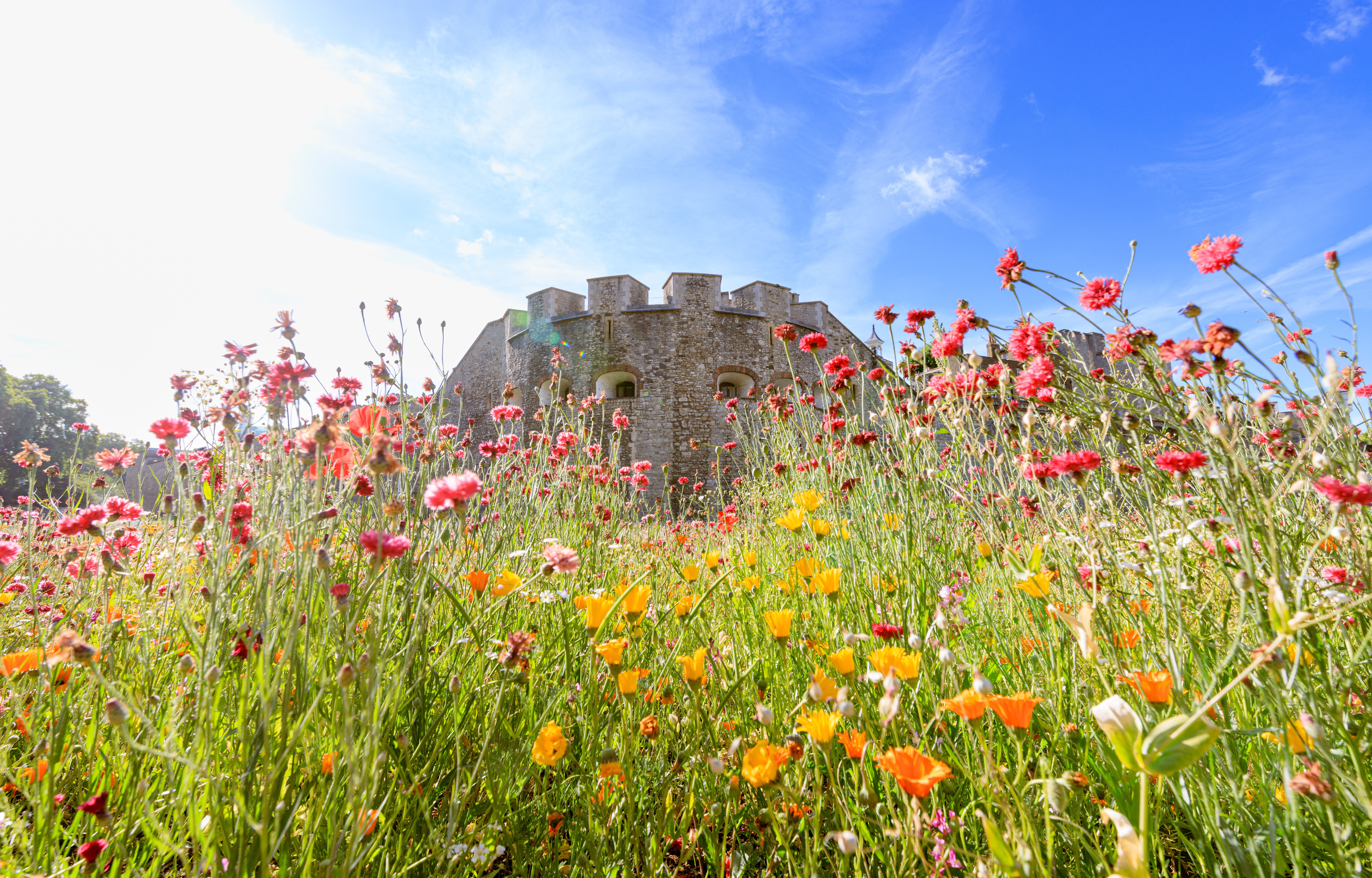
The Tower of London’s Platinum Jubilee tribute, Superbloom, is entering a new stage as workers mow down the flowers for the next phase of Superbloom.
The display was historic as it marked the first time the Tower of London’s moat was open for the public to walk around leisurely. More than 20 million seeds were strategically planted to provide visitors with a different experience whenever they came. Now, workers are mowing down those plants to distribute seeds in the soil, making way for another display next year.
In addition to bringing the flowers back, the Tower of London hopes next year’s display will be rich in species. In one area, 21 native species in a single quadrant were recorded during Superbloom. The hope is by replanting the flowers, more pollinators and species will return in the future.
Mowing down the flowers preserves the seeds and gives the flowers the best possible chance to return in 2023. The Tower of London said workers spent 174 days nurturing the seeds during a challenging year for gardening, but it all paid off.
Andrew Grant RDI, founder and director of Grant Associates, the lead designer of Superbloom, said: “The Tower of London Superbloom was always envisaged to be an evolving landscape display that would shift and change colours and patterns, both this year and in the years to come. Its intention was to change the way visitors see and interact with the moat – and that’s been firmly accomplished this year.
“This has just been the first stage in what is set to be a long-term journey of biodiverse transformation for the site. In the years to come, the plants, wildlife and soil will all naturally adapt and evolve on the site, while the moat will continue to serve as an inspiring haven of nature at the very heart of the city of London. The project shows that, even in the most bustling and developed of urban environments, it is still possible to intentionally create powerful spaces that are full of life and where nature can thrive.”
While the Tower of London is located in the heart of London, the impact of Superbloom spread across the nation. Superbloom worked with nearly 1,500 schools (100,000 children), and about 24,000 children had the opportunity to visit in person.
Putting Superbloom together is no easy task. About 800 volunteers dedicated 21,600 hours to the event.
For those looking to volunteer next year, the Tower of London said there would be volunteer opportunities announced in due course.
As of now, there is no specific date on when visitors will be able to return to the tower for next year’s Superbloom.

